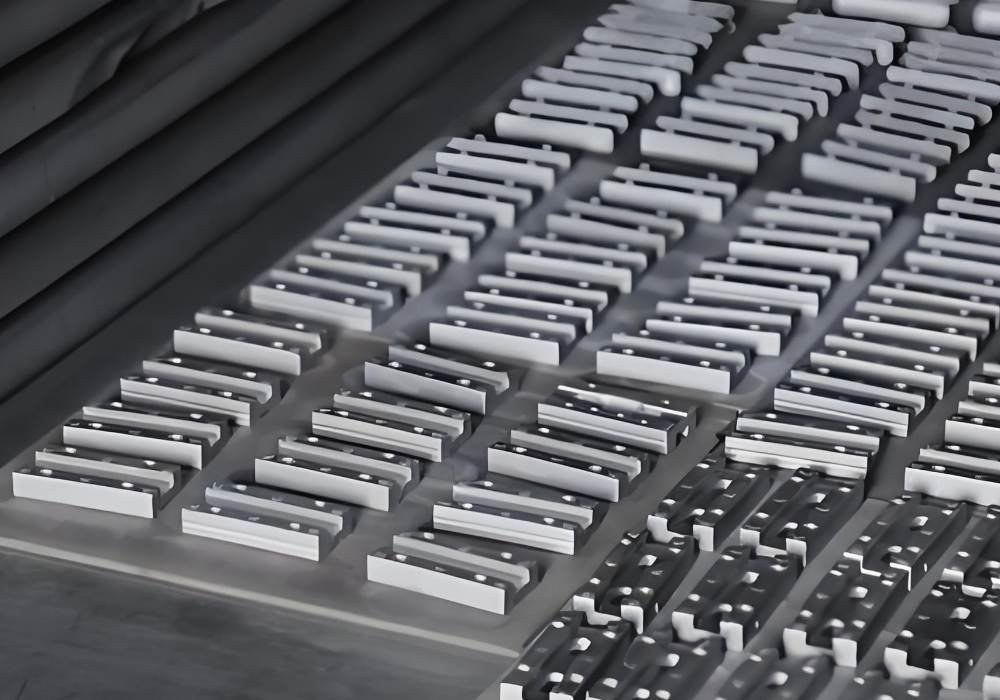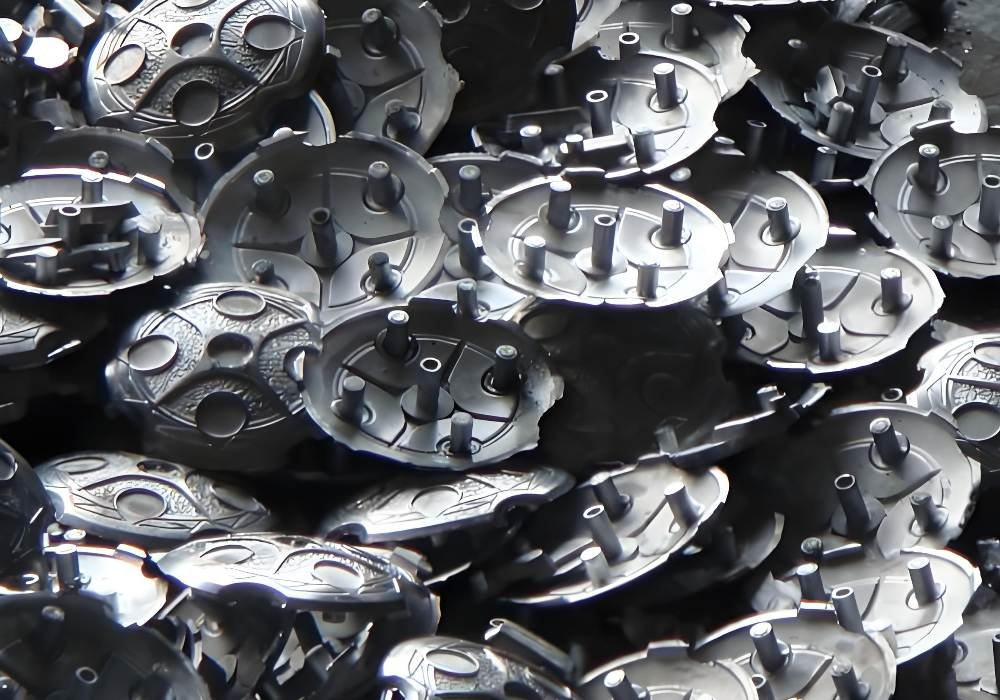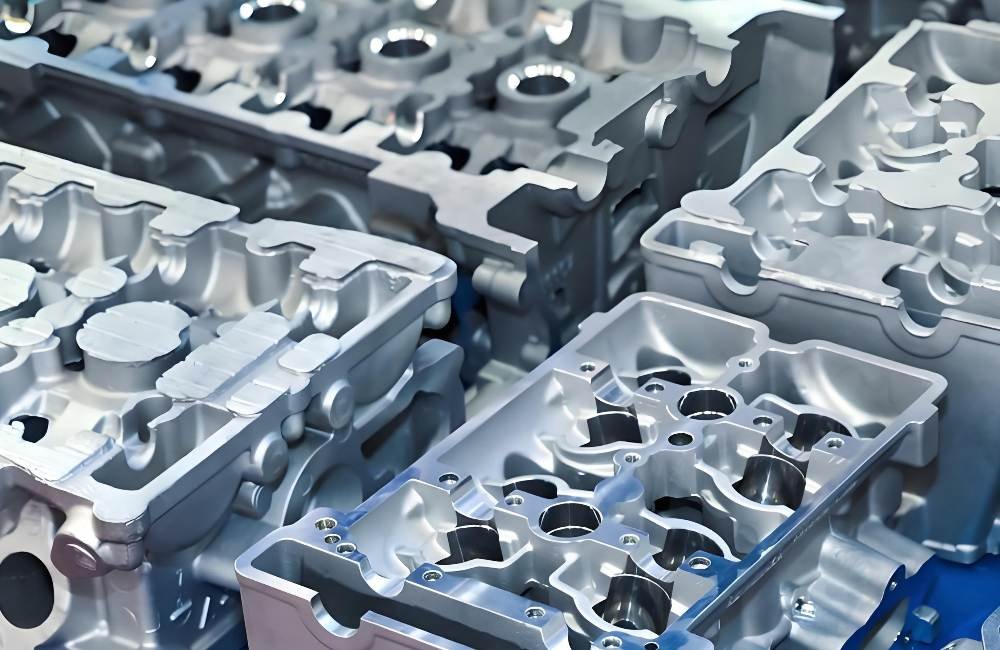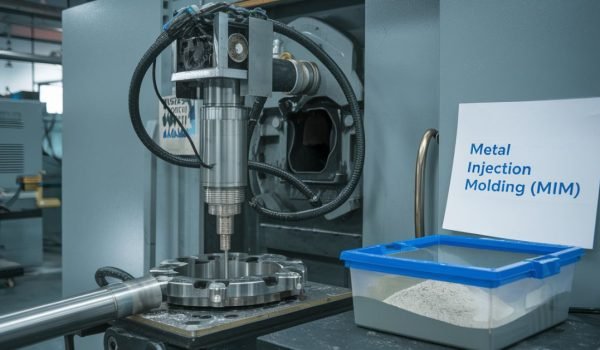Two popular manufacturing processes that are used to produce complex, precision metal parts include die casting and metal injection molding (MIM). Both methods produce excellent quality, but they vary quite a bit in process, materials used, cost, and end application. MIM is particularly well suited for low-volume production of complex, heavy-density parts, and die casting is well suited to high production rates of lightweight structures.
By knowing the distinction between these processes, industries can decide which one works best according to their needs, budget, and the design they want.This comparison covers their advantages, limitations, and scenarios where to use them best.
1. Basics of the Two Molding Methods
High-quality, accurate parts are produced in different ways through several metal-forming techniques used by manufacturers. Metall injection molding (MIM) and die casting are two commonly employed methods. Although they both produce great results, they work differently and have specific use cases. Let’s look at their processes, advantages, and practical applications.
1.1 What is Metal Injection Molding (MIM)?
Metal injection molding (MIM) is a process that takes advantage of the design flexibility offered by plastic injection Molding and the properties of metal. It consists of the mixing of metal powders in a fine state with a binder to form a feedstock, which is injected into a Mold.
The binder is removed, and the part is sintered, in which high heat melts the metal particles together to create a strong, dense component.

1.2 Advantages and Disadvantages of MIM
Metal injection Molding (MIM) is a great option for producing intricate metal parts with precision and efficiency. Below, we discuss its key advantages and disadvantages to help you understand its strengths and limitations.
Advantages of MIM:
- Best suited for small and complex components: MIM is suitable for producing intricate parts that would be hard and expensive to produce using conventional methods.
- Supports complex shapes: This process also makes it possible to create highly detailed, complex shapes and forms without further machining.
- High material efficiency: MIM minimizes waste by employing fine metal powders and therefore can be a low-cost solution.
- Outstanding mechanical properties: The solids constructed have the strength and durability that are equivalent to solid metals.
- Ideal for mass production: Product consistencies and exactness make MIM a viable technique for high-value production.
Disadvantages:
- Slower processing: MIM requires several steps, including Molding, debinding, and sintering processes, resulting in slower processing compared to other methods.
- Only small-to-medium parts are suitable: This process is unsuitable for component sizes larger than a roof box.
- High initial tooling cost: Molding and tooling can be costly, compared to some other manufacturing methods, upfront.
- Needs exact control: Every step of the process must be monitored precisely to maintain quality and precision.
- Not suitable for large chunks: Admittedly great for mass production, MIM doesn’t make sense for very large or cumbersome parts.
1.3 Applications of Metal Injection Molding (MIM)
Metal injection Molding (MIM) is used in industries that require high precision, high durability, and complex designs. It is a popular additive manufacturing technology with the ability to produce small components of high accuracy with remarkable mechanical properties. MIM finds applications in a range of industries, from medical devices to automotive and electronics, where it is critical in the production of high-performance components. Some of the key industries where MIM finds extensive application are listed below:
Medical Equipment: MIM is used to create highly precise and durable parts for medical devices. Surgical instruments and orthodontic brackets made through MIM ensure high performance, biocompatibility, and reliability in medical applications.
Firearms: The firearm industry benefits from MIM by producing small but strong components such as triggers, safety levers, and other internal parts. These components maintain high accuracy and durability, ensuring the reliability of weapon mechanisms.
Automotive Industry: MIM allows manufacturers to produce intricate gear components and sensor housings with excellent strength and precision. These parts enhance vehicle performance, ensuring better efficiency and longevity.
Electronics: MIM is ideal for manufacturing small, complex components like connectors and heat sinks. These parts are essential in electronic devices, ensuring stable connections, effective heat dissipation, and overall system performance.
1.4 What Is Die Casting?
Die casting is a metal-forming method where molten metal is forced into a reusable steel die at high pressure. It is an excellent process for producing thin-walled light components with a smooth surface and effective accuracy. It is widely used in aluminum, zinc, and magnesium non-ferrous metals.

1.5 Advantages and Disadvantages of Die Casting
Die casting is a fast and efficient manufacturing process used to create strong, detailed metal parts with high precision. Below, we explore its key advantages and disadvantages to help you understand when it’s the best choice.
Advantages of Die Casting
- Production efficiency: Die casting enables high-speed production with great repeatability, making it perfect for mass production.
- Smooth, intricate items: The process yields near-net-shape pieces to fine tolerance, minimizing additional finishing work.
- Durable but still light: If you are looking for light parts with the option for die-cast parts, it will still be able to withstand anything that you throw at it.
- Less post-processing needed: Die-cast components have quality surface finishes, resulting in less machining and polishing, hence a time- and cost-saving approach.
- High-quality produced in bulk: The accuracy that die casting offers guarantees equal quality throughout every produced part.
Disadvantages of die-casting
- Not the best for detailed or miniatures: MIM overtakes die casting when we are talking fine detail or miniature components.
- More material waste: More scrap is generated due to excess material from runners and gating, which reduces efficiency.
- Costly die maintenance and tooling: It is costly to maintain and replace dies, as well as the tooling used for low-production runs.
- Low precision on the micro level: Die casting produces smooth parts, but to create extreme precision on some features it will require additional (machining) processes.
- More costly and less resource-efficient: Die casting takes more raw material and energy than MIM does per part.
1.6 Applications of Die Casting
Die casting is a widely used manufacturing process that produces high-strength, lightweight, and cost-effective components with excellent precision. Its ability to create detailed and durable parts makes it an essential technique in various industries. From automotive and aerospace to consumer electronics and industrial machinery, die casting plays a crucial role in modern manufacturing. Below are some key industries where die casting is commonly used:
Automotive Industry: Die casting is essential in the automotive sector for manufacturing strong yet lightweight engine blocks and transmission housings. These components enhance vehicle performance, fuel efficiency, and durability, keeping vehicles running smoothly.
Aerospace Industry: The aerospace sector relies on die casting to produce accurate brackets and other aircraft components. These parts provide strength and reliability while keeping weight to a minimum, improving fuel efficiency and overall aircraft performance.
Consumer Electronics: Die casting is used to manufacture sleek and sturdy smartphone frames and laptop casings. This ensures that electronic devices are both stylish and durable, withstanding daily wear and tear while maintaining a premium look.
Industrial Machinery: The industrial sector benefits from die casting for producing durable pumps and motor housings. These components offer excellent strength and longevity, making them ideal for heavy-duty machinery and demanding industrial applications.
Both MIM and die casting have unique advantages and applications, providing valuable solutions across various industries. Next, we will compare their performance, costs, and the types of projects best suited for each method.
2. MIM vs. Casting: Key Differences
While both metal injection molding (MIM) and die casting are efficient metal-forming processes, they differ in material types, production volume, process complexity, and costs.
| Factor | MIM (Metal Injection Molding) | Die Casting |
| Material | Ferrous (steel, titanium) | Non-ferrous (zinc, aluminium) |
| Part Size | Small to medium | Medium to large |
| Precision | High | Moderate |
| Finish | Smooth | Slightly rough |
| Speed | Slow | Fast |
| Tooling Cost | High | High |
| Waste | Low | High |
| Strength | High | Moderate |
| Best For | Complex, intricate parts | Large, strong parts |
| Post-Processing | Minimal | Sometimes needed |
Understanding these essential differences allows industries to determine which method best fits their needs.

2.1 Metal Options
Because MIM works mainly with ferrous metals (which include stainless steel, titanium, and nickel-based alloys), it is well-suited for high-strength applications. On the other hand, die casting is commonly utilized for non-ferrous metals such as aluminum, zinc, and magnesium due to their lightweight and corrosion-resistant elements.
2.2 Production Volume
Due to fast cycle times and high repeatability, die casting is better suited for high-volume production. MIM is better suited for small to medium-sized batches as it has longer processing time and material-specific limits, but it also can mass produce parts.
2.3 Process
Better Precision and Tolerances: MIM parts have greater precision and tighter tolerances compared to powder compaction processes due to the precise sintering of the powders. Die casting is fairly accurate (and additional machining may be needed for extreme precision).
- Precision & Tolerances: MIM offers extremely high precision and tight tolerances, making it ideal for intricate components. Die casting provides moderate precision, with some post-processing often needed.
- Part Complexity: MIM excels at producing highly detailed and intricate shapes, whereas die casting is better for less complex designs.
- Part Dimensions: MIM is suitable for small to medium parts, while die casting works best for medium to large components.
- Surface Finish: MIM produces smoother surfaces with minimal finishing required. Die-cast parts may have a slightly rougher texture and often require additional machining or coating.
- Mould Lifespan: MIM molds last longer since the process operates at lower temperatures. Die-casting molds wear out faster due to exposure to high heat and molten metal.
- Material Wastage: MIM is highly material-efficient, with minimal waste due to the use of fine metal powders. Die casting, on the other hand, generates more scrap material due to excess metal in the gating and runner system.
2.4 Manufacturing Costs
Tooling for die casting is more expensive upfront but cost-effective at scale. Compared to MIM, tooling costs are much more moderate, but processing and material preparation times can be longer and more costly. Which is best depends on production quantity, material needs, and design complexity.
3. Die casting vs. Metal injection Molding: which method to choose?
Whether you need die casting or metal injection molding (MIM) depends on complexity, material, volume, and cost. MIM is a perfect solution for small, complex parts requiring high precision and high strength, while die casting better suits bigger, lightweight parts with high production efficiency. MIM is your best bet when you need fine details with low waste. But when it comes to rapid, high-volume production with stronger, non-ferrous metals, die casting is a better option. Knowing these differences will help you make the right choice for your needs.
FAQ’s
What is the fundamental difference between die casting and metal injection molding (MIM)?
It produces big, lightweight metal parts from molten metal with tie-cast technology and produces small, complex parts from metal powder with the MIM.
Which manufacturing process is the least expensive—die die casting or MIM?
Die casting is more cost-effective for production in large quantities, and MIM can get expensive because of its multi-step process, but projects can be cost-effective in producing small, complex parts.
Are die casting and MIM used for the same types of metals?
Die Casting mainly operates using non-ferrous metals such as aluminum, zinc, and magnesium, while MIM focuses on ferrous metals such as stainless steel, titanium, and nickel alloys.
What is the better precision and surface finish for the above method?
MIM yields greater accuracy and a finer surface finish, which is especially suitable for detailed parts. Die casting offers decent accuracy but might need some finishing.
How to pick between die casting vs MIM for your project?
For small parts on large MIMs with tight tolerances and high break strength, make MIM your top choice. Choose Die casting for larger, lighter-weight parts and high-speed, high-volume manufacturing.
Conclusion
Both MIM and die casting expertly serve their specific ends, and each has its strengths. MIM is used very well for small, intricate, high-precision parts, while die casting is widely used due to faster production and cost for larger parts. Your design, considering your budget and production requirements, will play a good role in deciding what the right approach is. Knowing their differences will make it much easier for you to find the best one to go with and the process that suits your project better.




